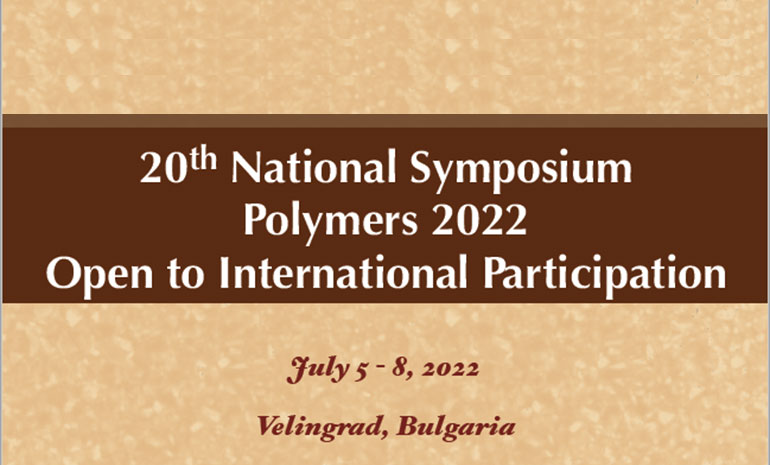- Bulgaria-Italy-Spain supercapacitors



20th National Symposium Polymers 2022 Open to International Participation
July 5 - 8, 2022, Velingrad, Bulgaria
Book of Abstracts
Symmetric and hybrid supercapacitors with novel poly(ionic liquid) electrolytes
A. Stoyanova, S. Veleva, B. Karamanova, L. Soserov, I. Dimitrov, R. Kalinova, Ch. Novakov
Due to the intriguing advantages of polymeric materials, they are widely used as electrolytes and binders in supercapacitors, especially for flexible ones. Research efforts to develop new polymeric materials with high mechanical, electrical, chemical and electrochemical properties, as well as their new nanostructures, have made great progress in recent years. The development of Polymeric Ionic Liquids (PILs), having polymer-bearing ionic liquids features in their structure, has attracted a growing interest.
In the present study, multistep synthetic strategy is applied for synthesis of novel pyrrolidinium - containing polymers and their turning into polymeric ionic electrolyte with high conductivity suitable for impregnation of composite electrodes or as additives in PIL electrolytes. The obtained polymers have lower molecular masses than those used so far in the literature, which is a prerequisite for higher conductivity and improvement of the electrochemical performance of the supercapacitor cell. Symmetrical supercapacitors based on these polymer electrolytes and commercial biogenic activated carbon (YP-50F, Kuraray Japan) have been developed, which demonstrate high efficiency and stable capacitance characteristics.
A new hybrid supercapacitor is demonstrated based on introduction of synthesized specific poly(vinylidene fluoride-co-hexafluoropropylene) (P(VDF-co-HFP) copolymer used as binder in its active electrode mass. The cells based on YP-50F, αβ-Ni(OH)2 composite electrode, ionic liquid (1-ethyl-3-methylimidazolium tetrafluoroborate) as electrolyte exhibit improved performances. An exsitu physicochemical analysis showed that P(VDF-co-HFP) did not change during the chargedischarge tests.
Carbon xerogel as electrode material for supercapacitors with polymer membrane
B. Karamanova, L. Soserov, S. Veleva, A. Stoyanova
The accumulation and storage of energy is an area that successfully combines leading technology for the production of nanomaterials and electrolytes with innovative engineering solutions. Electrochemical capacitor is the most promising energy-storage device that can meet the demands of high-power supply and long cycle life.
The present study examines the relationship between the surface chemistry of different carbon xerogels, the electrolyte type and the electrochemical properties of supercapacitors. Carbon xerogels were synthesized by the polymerization reaction between resorcinol and formaldehyde followed by carbonization and activation. The porous properties were modulated by modifying the pH and characterized by N2 adsorption - desorption isotherms, helium pycnometer and envelope density analyser. The synthesized materials were physicochemically characterized by DTA/TGA and SEM analyses. Based on them, two-electrode symmetric supercapacitor cells with an Aquivion® E87-05S polymer membrane were assembled. The supercapacitors are tested by different electrochemical methods - cyclic voltammetry, galvanostatic charge/discharge measurements and long-term tests in neutral and alkaline environments.
The results are discussed on the basis of electrode-electrolyte interactions and a correlation is found that could be important to design sustainable solid-state supercapacitors with high power density and faster charge/discharge rates.